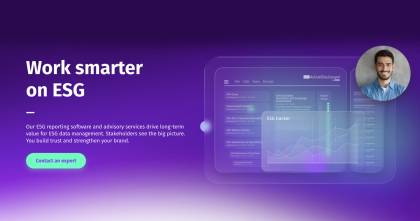Last year, the SEC took a major step toward sustainability with several actions related to climate frameworks. Analysts believe this will lead to a suite of climate disclosures set to become standardized within the next year. Let’s explore the climate-related financial disclosure changes and how they may impact businesses.
Timeline of SEC Climate Change Financial Disclosure Changes
In February 2021, the SEC initiated a review of climate-related disclosures. The 22-member Task Force on Climate-Related Financial Disclosures (TCFD) was established in March 2021.
Its responsibilities include:
- Development of initiatives to watch for ESG-related missteps
- Coordination of internal resources to identify and flag violations
- Review of disclosure and compliance issues
The matter of climate disclosures is sure to be a "when not if" matter, with financial leaders waking up to the demand for stronger ESG reporting and benchmarking.
What Are the Proposed Climate-Related Disclosures?
These proposed changes would require businesses to include climate-related disclosing in their registration statements as well as specific reports.
In a press release, the SEC signaled an interest in learning about:
- Climate risks that are set to impact the business financially
- Climate-related financial statements
- Disclosures of greenhouse gas emissions (Scope 1 of proposed changes)
- Indirect emissions from purchased electricity and other energy sources (Scope 2 of proposed changes)
- Climate-related business operations updates
As part of the proposed disclosure changes, accelerated and large accelerated filers would need to include an attestation report that speaks directly to direct and indirect emissions disclosures from greenhouses gas, electricity and other sources. This report would need to be sourced from an independent attestation service provider to help ensure neutrality.
Under Scope 3, businesses that have set greenhouse gas emissions targets will also need to file statements disclosing greenhouse gas emissions connected to upstream and downstream activities resulting from normal business operations. Smaller reporting companies can receive an exemption from this Scope 3 requirement.
What Is the TCFD Framework?
The TCFD has its own reporting framework. While the new disclosure regulations place responsibilities on companies to file additional reports, there are benefits to business, too.
As the TCFD notes on its website, TCFD reporting helps with the following:
- Risk assessment: Companies that report will be in a better place to understand and evaluate climate-related risks to their operation and their suppliers, to protect the business.
- Capital allocation: This data will help companies make informed decisions on spending.
- Strategic planning: On the whole, companies should be able to better evaluate climate-related risks and exposures and adapt.
Incorporating Environmental Reporting Into SEC Filings
There is a helpful framework for reporting this information on SEC filings, such as the 10-K or the annual report, developed by the Climate Disclosure Standards Board (CDSB). The most recent version of this CDSB framework was released in 2022 after a consultation with the public.
Ultimately, CDSB’s framework is designed to help simplify environmental and social data reporting while making the data intelligible to an audience of investors. Using the framework, companies can translate sustainability commitments into long-term value that can incentivize investment. They can adequately communicate their environmental actions to their investors and connect these actions to the overall business strategy.
The Benefits for Businesses of Climate-Related Disclosures
Much of the conversation out there focuses on how businesses can prepare for the forthcoming climate-related reporting. However, it's also worth noting the positives for businesses and investors alike of these proposed new rules.
Benefits include:
- More transparency about the environmental impact of doing business
- Potential investors can now review companies with an eye toward environmental impact, rewarding those they believe are adept in this regard
- Clearer rules for all businesses by which to abide means a more even playing field
- Consistent, accurate data for investors and businesses to understand risk and realities
What's Next?
The SEC is taking public commentary on the proposed rule changes through June 17, 2022 — via email or webform.
Assuming everything proceeds as planned after the public commentary, the changes could be finalized as soon as December 2022. If that is the case, businesses will plan to meet Scope 1 and 2 Disclosures, for fiscal year 2023, by February 2024. Scope 3 reporting will be due by February 2025 if the rule changes are finalized by December 2022.
Business need to first understand the proposed changes now and make the necessary internal changes to be able to meet these new climate reporting requirements if everything moves along as expected.
The first step is to understand how the proposed climate reporting requirements impact business operations. The second step is to understand the potential climate risks to the business model, including risks impacting suppliers. Third on the list is considering what changes need to be made to enable the business to meet the new reporting requirements by SEC deadlines.
This will be different for every company but can involve consulting, new resources and changes to the operating model to successfully meet requirements and communicate environmental progress to investors and stakeholders.
